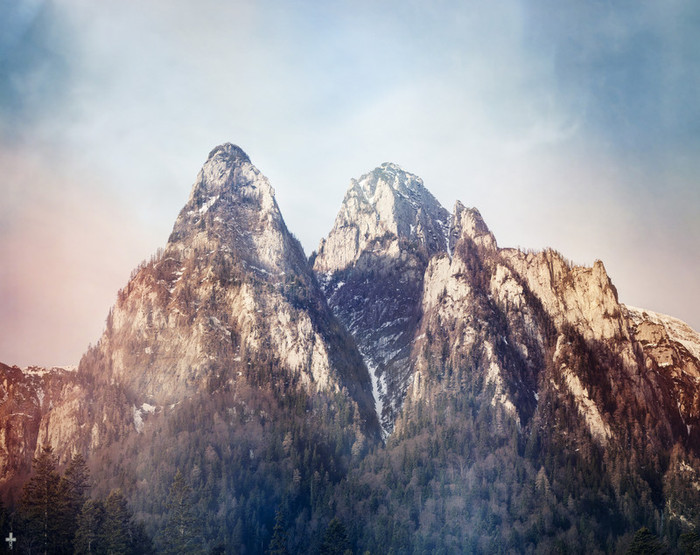Updated September 2016 with work from Japan.
The Mt. Fuji works will be exhibited in two solo shows, in both Japan and London.
The Tokaido Hiroshige Art Museum in Shizuoka will host the first exhibition, running from November 2016 to Feb 2017.
In London, the works will be exhibited at the White Conduit Gallery in January 2017.
Mountains defy us and define us. They are a backdrop to our lives, they are a timeless and formidable power and they have long been the home of legend and myth and the spurs of imagination and aspiration. Not surprisingly, mountains have been the haunts of deities in almost every religion throughout the world. Their daunting cliffs and powerful weather systems makes them unattainable by ordinary mortals and has invested them with a sense of the sacred and mysterious. It is on mountain peaks that we can envisage the marriage between the heavens and earth and in many civilisations they have duly become associated with both life and death.
In this project, photographer Charles Emerson has set out to reawaken our sense of the power and the changing character of the great mountains in our landscapes. He draws out the complex and mythic nature of these mighty forms by using multiple exposures on film, digital shots and through a process of collecting light.
Emerson has been preparing this on-going photographic essay over a period of five years, travelling in the UK, Romania, Jordan and most recently Japan to assemble photographs which represent different cultures and environments, but all of them sharing the theme of mythic power and a sense of the numinous. His fascination with the subject stems from his frequent travels, from a young age, to a family home in the Western Highlands, a journey which took him directly passed the intimidating pyramidal presence of Bauchaille Etive Mor, the Great Herdsman of Etive, a mountain which stands guard at the southern edge of Glencoe. This mountain is beautiful, menacing and mysterious in equal parts. The huge cliffs on its north-east side, visible in Emerson’s photograph, have claimed many lives.
Emerson’s technique of ‘collecting light’ onto film subtly embeds each of his mountain subjects with a composite of layered imagery that builds the mythical presence of the subject. He comments: “Through this process I physically capture available light from the atmospheric conditions at each specific location. By opening the camera back, I flood the film with light; I then shoot continually over with scenes and details at each location. I’ve adopted a variety of methods including the use of a spherical solid glass lens which further adds abstract light effects and elements to the finished work.”
This technique produces vividly coloured, textured and abstract imagery, which stand up in their own right as works in the series. “Once the films are scanned,“ Emerson observes, “I use these as a ‘digital palette’.” By overlaying the film elements onto a highly detailed digital back plate of the mountains, each final piece has a unique treatment directly linked to the light and conditions that prevailed at the specific location and time. These composite images become palimpsests of the scenes photographed, communicating more dimensions to characterise and identify the mountains, and transporting the viewer beyond the sense of their physical presence.
click to view the complete set of images in the archive










